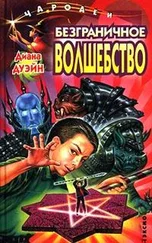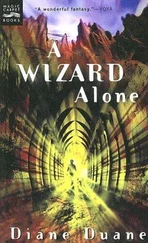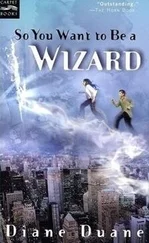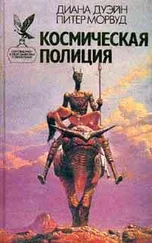Диана Дуэйн - Lifeboats
Здесь есть возможность читать онлайн «Диана Дуэйн - Lifeboats» весь текст электронной книги совершенно бесплатно (целиком полную версию без сокращений). В некоторых случаях можно слушать аудио, скачать через торрент в формате fb2 и присутствует краткое содержание. Жанр: Фэнтези, на английском языке. Описание произведения, (предисловие) а так же отзывы посетителей доступны на портале библиотеки ЛибКат.
- Название:Lifeboats
- Автор:
- Жанр:
- Год:неизвестен
- ISBN:нет данных
- Рейтинг книги:4 / 5. Голосов: 1
-
Избранное:Добавить в избранное
- Отзывы:
-
Ваша оценка:
- 80
- 1
- 2
- 3
- 4
- 5
Lifeboats: краткое содержание, описание и аннотация
Предлагаем к чтению аннотацию, описание, краткое содержание или предисловие (зависит от того, что написал сам автор книги «Lifeboats»). Если вы не нашли необходимую информацию о книге — напишите в комментариях, мы постараемся отыскать её.
Lifeboats — читать онлайн бесплатно полную книгу (весь текст) целиком
Ниже представлен текст книги, разбитый по страницам. Система сохранения места последней прочитанной страницы, позволяет с удобством читать онлайн бесплатно книгу «Lifeboats», без необходимости каждый раз заново искать на чём Вы остановились. Поставьте закладку, и сможете в любой момент перейти на страницу, на которой закончили чтение.
Интервал:
Закладка:
For some long minutes Thesba seemed to do nothing in particular—merely continued on its normal course around Tevaral, heading for what in Kit’s gates’ location would have been its second rising of the day. Many of the wizards involved in monitoring the decommissioning of the management wizardries, at least those who were of a betting temperament, began laying wagers with one another as to how long this process would continue. Others, more deeply versed in planetary and orbital mechanics, or with a better instinctive feel for events of this type, didn’t bother.
Approximately six minutes and forty seconds after power was withdrawn from the final maintenance wizardries that had been holding Thesba in one piece, a fissure began to develop in the crust on Thesba’s leading side, stretching from about halfway up into its northern hemisphere to just south of its equator. Other similar fissures began to develop on the opposite side of the moon, but the first one continued to grow, stretching longer, pulling wide, deepening with astonishing speed. Through the already-hot glow of the revealed upper mantle, hotter material from deeper inside the moon began to spew out. The great longitudinal fissure pulled wider yet, stitching up into the polar regions, across them, and down into the northern hemisphere on the other side.
Though wizardly data recorders were functioning and analyzing every movement of mass in real time, with merely visual senses it quickly became impossible to grasp exactly what was happening. The moon’s atmosphere had kindled, and the flammable gases in it began oxidizing at such a rate that within a very short time all of Thesba’s surface became invisible under a planet-wide sheet of fire.
It took some minutes more of the moon’s transit along its already disturbed orbital path to make it possible to tell what was going on. Thesba’s overall shape seemed now more transversely ovoid than spherical as it sailed along in an obscuring cloud of its own rapidly combusting atmosphere, trailing burning gases and outthrown magma behind it in a long disastrous trail. But then came the unexpected thing—terrible in the way that only events of such magnitude can be, fascinating even though frightening, a sight that would leave the analysts working out the moments of inertia behind this particular event for months if not years to come. Through the ruin of Thesba’s structure, past the split shell of the mantle layers and the shattered crust, the misshapen iron core slowly shouldered bodily out of the moon that had hidden it since it coalesced, tumbling as it came, rotating more quickly now that it was freed from the pressure of the quintillions of tons of mass that had so long held it in check. Slowly the core began to draw further and further away along the orbital path, making its way ahead of the broken halves of Thesba that were now ever so gradually beginning to fall behind it, trailing further and further in its wake.
The general prediction of what would come next, once this had happened, was straightforward enough. The two great halves of Thesba would remain in orbit a while, tumbling, fragmenting, some of the fragments rebounding into one another. A debris field somewhat congruent to the moon’s old orbit would form. But it would not remain in that form for long. The core, plowing through Thesba’s shattered remnants again and again in its early orbits as the fragments began to decelerate due to their lesser mass, would impact over and over with the larger pieces—some of them becoming briefly gravitationally associated with the core again, some being caromed violently out of its way in what to a player of the Earth game “billiards” would have recognized as massively destructive bank shots. Those impacts, brutally inelastic and as subject to the laws of motion as anything else, would themselves change the rogue core’s orbit more than once, deforming that orbit, bumping it into a more elliptical configuration and finally into one that would be terminally parabolic. It would be the core’s acceleration, increased by interactions with Tevaral’s mass and a serendipitous angle with the system’s white-giant primary, that would finally bring the core plummeting into Tevaral’s southern hemisphere in sixty-three days’ time—the bullet-like impact of a three quintillion-ton mass of spinning metal into the body of a dying world already racked by weeks of massive earthquakes and tsunamis.
The Interconnect Project wizards and scientists most skilled with numbers and probabilities would be exercising their skills at the betting end of things for several weeks to come over the issue of whether Tevaral itself would survive that impact as a single body, or itself break up as Thesba had, its shattered mass slowly becoming the source of a vast asteroid field that would someday occupy its orbit around Sendwathesh. But on the day Thesba shattered, the world called Tevaral, identified (in Earth’s astronomical nomenclature) as 11848 Cephei IV, was proactively struck from the records of all extant Galactic and interstellar associations of the Orion Arm of the Milky Way Galaxy, and formally declared uninhabitable…
…and its dominant species and biosphere classified as “successfully resettled without undue loss of life”.
THIRTEEN:
February 14, 2011: Earth
Valentine’s Day was a Monday this year. Mondays were bad enough as a general thing, but the strains of this one had been unusual. Now Nita and Kit were walking home from school, both of them slightly weary after the overexposure to everybody else’s showy declarations of affection.
Kit in particular was tired due to the results from his calculus test having come back. He hadn’t failed. Neither had he passed brilliantly. He was going to be hearing about this from his Pop. Right now he had other things on his mind as they came up to his driveway.
“I didn’t want to give you your thing today,” Kit said, “because everybody was watching and… I didn’t want to have to make the explanations in front of them, because it would all have been made up and it wouldn’t have made any sense. I thought I’d wait till now. So here.”
He reached into his pocket. “I was going to wrap this,” he said, “and then I couldn’t find any wrapping paper —and we were all out of ribbon—”
“And you are absolutely useless at wrapping things,” Nita said. “I hate to have to say it, but you know it’s true. So it’s okay.”
Kit nodded, blushing, and reached into his pocket: handed her what he had made. It was a small heart-shaped object, maybe an inch long, and it glinted in the afternoon light.
Nita turned it over in her fingers, feeling the weight of it. “It’s crystallized carbon,” she said.
“There was a lot of it exposed on Tevaral’s surface after they started scraping the biosphere off,” Kit said. “So I thought—”
“It’s diamond, actually,” Nita said.
Kit blushed. “It’s not diamond diamond,” he said. “The crystalline structure’s all wrong, you know that perfectly well, don’t give me grief here. It’s pretty, and it’s tough, and it takes a whole lot to hurt it.” Like someone else I know.
“Oh really,” Nita said very softly.
Kit cleared his throat. “I asked Hesh if he would have somebody grab me a chunk. Worked it over a little bit.”
Nita turned the little heart over in her hand. On the outside of it was engraved one of the simpler graphical restatements of the Wizard’s Knot. “There’s something in there, though,” she said, looking up at him.
Kit nodded. “Turn it over,” he said.
She did. The other side was very finely micro-engraved with the words, TEXT ME.
“Cheleb had this funny idea,” Kit said. “That maybe you’d asked me to change my name for you. Or that I was thinking about asking you to change yours for me.”
Читать дальшеИнтервал:
Закладка:
Похожие книги на «Lifeboats»
Представляем Вашему вниманию похожие книги на «Lifeboats» списком для выбора. Мы отобрали схожую по названию и смыслу литературу в надежде предоставить читателям больше вариантов отыскать новые, интересные, ещё непрочитанные произведения.
Обсуждение, отзывы о книге «Lifeboats» и просто собственные мнения читателей. Оставьте ваши комментарии, напишите, что Вы думаете о произведении, его смысле или главных героях. Укажите что конкретно понравилось, а что нет, и почему Вы так считаете.





